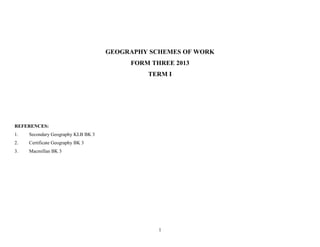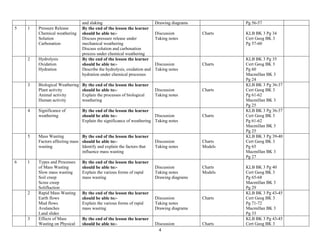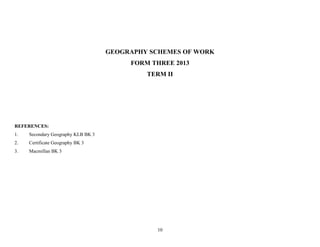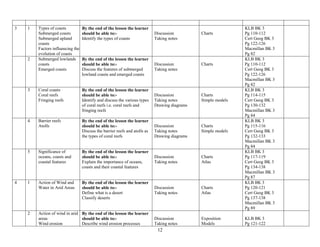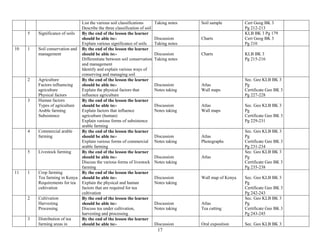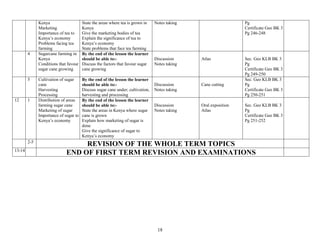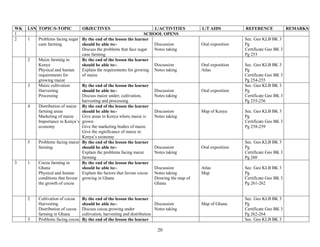This document outlines a geography schemes of work for Form Three students in Kenya covering Term I. It includes 10 weekly lessons on topics like statistical methods of presenting data, map work, weathering and mass wasting processes, hydrology, and the formation and features of rivers at different stages. Each lesson lists the learning objectives, planned activities, and reference materials. The lessons cover examining graphs and charts, interpreting maps, discussing landform formation processes, and explaining river landforms through diagrams and models.
